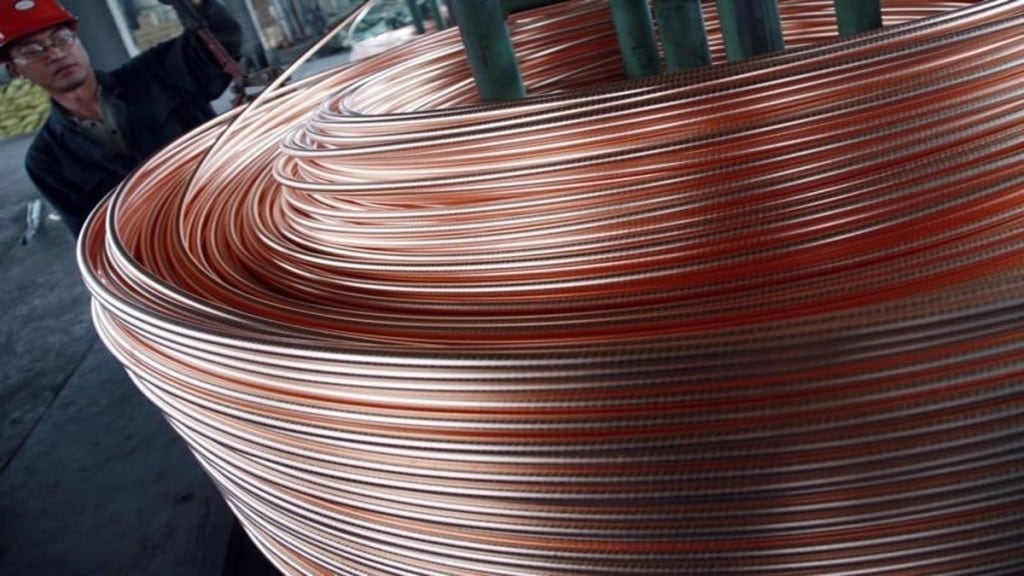Despite having limited resources of copper ore, Gujarat has emerged as the country’s copper production hub with large investments from Hindalco and Adani at Dahej and Mundra, respectively.
While Hindalco’s Dahej unit started in 1998, Gujarat pipped Tamil Nadu to become the largest copper producer with Adani’s Kutch facility starting operations in 2024.
Hindalco’s proposed smelter expansion at Dahej by 300,000 tonnes per annum is going to entrench Gujarat’s position.
Tamil Nadu’s copper capacity plunged following the closure of Vedanta’s Tuticorin smelter in 2018, which used to contribute 46% of the domestic production. JSW Group’s 500,000 tonnes per annum proposed greenfield smelter in Odisha is planned to be operational by 2028-29.
According to government estimates, India has around 1.66 billion tonnes of copper ore resources. Of these, 9.87% are classified as ‘reserves,’ while the remaining 90.13% are categorised as “remaining resources.” Rajasthan holds the largest resources of copper ore, amounting to 868 MT (52.25%), followed by Madhya Pradesh with 23.28% and Jharkhand with 15.14%. The remaining 9.33% are found in 13 states including Gujarat and Tamil Nadu.
Strategic advantage and investment surge
Experts noted that Gujarat’s strategic location and proximity to the ports such as Mundra, Kandla and Hazira are key considerations for investors, given India’s massive reliance on imports for raw materials for refined copper. They also believe that the benefits of having copper locally would help the state attract investments from the sunrise sectors going forward.
Port connectivity provides a critical logistical advantage for copper smelting and refining. Easy access to sea routes reduces transportation costs and enables faster handling of both imported ores and exported finished products. Gujarat’s proximity to ports simplifies this import process, ensuring a steady and cost-effective supply of raw materials for domestic smelters.
“Factors such as these have encouraged investments, such as Hindustan Copper‘s expansions and Adani’s Kutch unit, which has an initial 500 KT capacity and plans to grow to one million tpa by FY 2029. Hindalco now plans expansion in the state at its Dahej facility. Combined with world-class industrial infrastructure, renewable energy availability, and investor-friendly policies, Gujarat positions itself as India’s future-oriented copper hub, supporting both domestic growth and global trade,” said Jayprakash Sahu, General Manager, BigMint.
Future demand and reducing import dependence
Sumit Jhiunjhunwala, vice president at ICRA, said, “Domestic refined copper consumption is estimated to grow by ~6–7% in FY2026–27, driven by sustained demand from building construction and infrastructure segments. However, domestic production continues to lag demand, keeping India in a net import position, with imports meeting ~37% of consumption in FY2025. The recent commissioning of 0.5 mmt capacity, coupled with additional expansions in the medium term, is expected to reduce import reliance and potentially restore net exporter status gradually. Coastal-based expansions are supported by logistics viability.”
The closure of the Sterlite unit was primarily responsible for Indian production dropping from 843 KT in FY18 to 573 KT in FY25, even as demand for the metal has risen at a scorching speed, fuelled by extensive government infrastructure initiatives, a significant shift towards renewable energy, and growth in the automotive and electric vehicle sectors.
The country turned a net importer of copper in FY19 and has since remained heavily import-dependent. In FY25, India’s copper exports stood at $2.3 billion and imports $10.7 billion.
Categorised as a critical mineral, copper is likely to be in high demand going forward, especially because of the emergence of electric vehicles and semiconductor units.
The government expects India’s copper demand to double by 2030 as the country accelerates its industrial and economic growth. This necessitates expanding domestic exploration, enhancing refining capacity, and strengthening supply chain resilience. Sensing the need, the government has amended the Minerals and Metals (Development and Regulation) Act and introduced a composite licensing system for copper blocks. However, since 2015, five copper mineral blocks have been auctioned. There are 54 ongoing copper exploration projects in different parts of the country. Reopening of the closed smelting capacity would also augur well.

